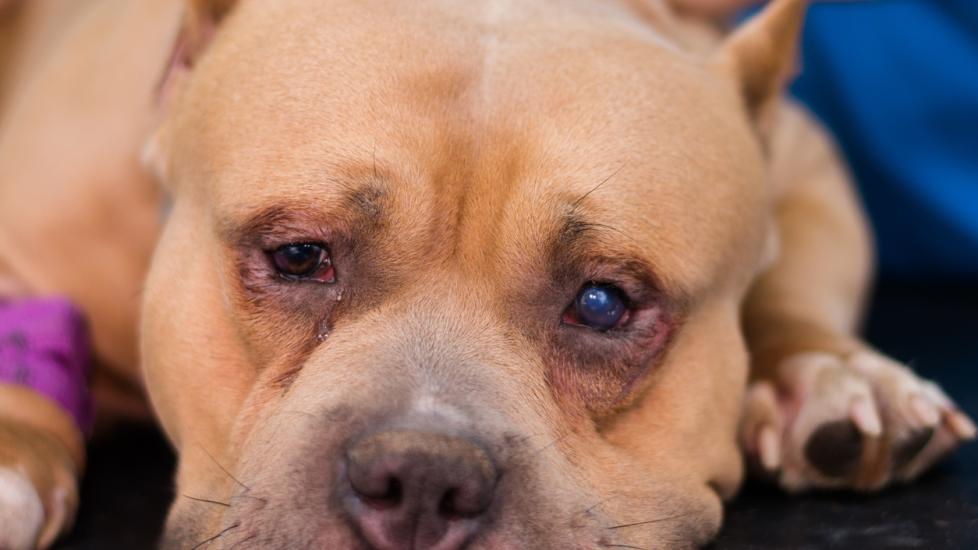Pet Care Prowess: Understanding and Addressing Eye Ulcers in Canine Companions
Lavishly gazing with those soulful eyes, our canine friends often captivate us with their unwavering loyalty and affection. However, beneath the surface of those enchanting orbs lies a delicate world that requires attentive care to keep them healthy and sparkling. One such concern is the eye ulcer – a condition that demands immediate attention from pet owners and professionals alike. In this comprehensive guide, we delve into the intricacies of doggy ocular health, exploring what eye ulcers are, how they develop, and most importantly, how to recognize and address these potentially sight-threatening afflictions effectively.
The Silent Sentry: What Are Doggie Eye Ulcers?
Dogs, like humans, have a protective layer known as the cornea that shields their eyes from external irritants and helps maintain clarity of vision. An eye ulcer occurs when there’s an open wound on the surface of the cornea, typically caused by trauma, infections, or even certain medications. These lesions can be extremely painful for your furry friend and may lead to severe complications if left untreated.
Unveiling the Causes: How Do They Develop?
The development of an eye ulcer in dogs can stem from various sources. Common culprits include:
1. Trauma: Foreign objects (like sticks or grass awns) entering the eye, scratches during play, or even vigorous cleaning by owners can cause damage to the cornea.
2. Infections: Bacterial, viral, or fungal infections can trigger inflammation and subsequent tissue breakdown, leading to ulceration.
3. Certain Medications: Topical treatments containing corticosteroids or other immunosuppressive agents can sometimes predispose dogs to developing ulcers due to reduced immune response.
4. Degenerative Disorders: Conditions like entropion (inward rolling of eyelids) can result in constant irritation and rubbing against the eyeball, contributing to the formation of ulcers.
Spotting the Signs: Recognizing the Warning Signs Early On
It’s crucial to know the signs of an eye ulcer so you can seek veterinary assistance promptly. Watch out for any of the following symptoms:
– Excessive squinting or pawing at the affected eye
– Redness or swelling around the eye area
– Cloudiness or discharge within the eye itself
– Your dog keeping its eye closed more than usual
– Refusal to eat or engage in normal activities
If you notice any of these indicators, it’s essential not to delay seeking professional help. Veterinary ophthalmologists are specially trained to diagnose and treat complex eye conditions in pets.
The Path to Healing: Treatment Options for Doggie Eyebright
Once diagnosed, treatment options will depend on the severity and underlying causes of the ulcer. Some common interventions include:
1. Medicated Drops: Antibiotics, antivirals, or anti-inflammatory drugs may be prescribed to control infection and reduce pain.
2. Steroid Therapy: If deemed appropriate, short courses of steroids might be used to manage excessive inflammation.
3. Anti-Septic Washes: To clean the eye and remove debris that could worsen the injury.
4. Bandages and Specialty Contact Lenses: Sometimes, protective coverings or lenses are applied to shield the healing cornea while it heals.
5. Surgery: In extreme cases, surgical intervention may be necessary to repair extensive damage or correct structural issues causing recurrent problems.
Preventive Measures: Keeping Those Puppy Eyes Healthy
To safeguard your pooch’s peepers, consider implementing these proactive steps:
– Regular checkups with a veterinarian to monitor overall eye health.
– Providing a safe environment where foreign bodies cannot easily come into contact with your dog’s face.
– Being cautious with medications and consulting with a vet before starting any new treatment regimen.
– Promptly addressing any changes in behavior that could indicate discomfort or distress.
In conclusion, understanding and managing eye ulcers in dogs involves a combination of vigilance, prompt action, and expert care. By recognizing the early warning signs and taking preventive measures, you can ensure that your beloved companion continues to enjoy a life filled with bright horizons and wagging tales – all thanks to clear vision.
